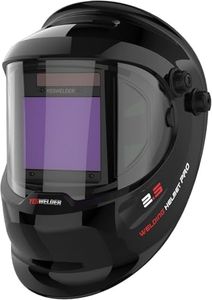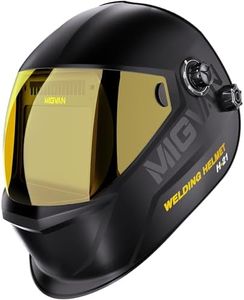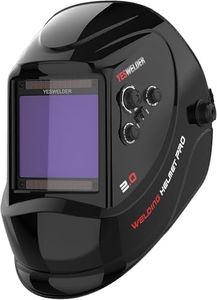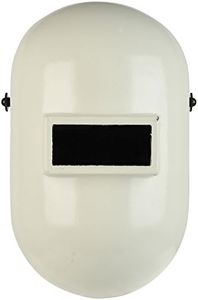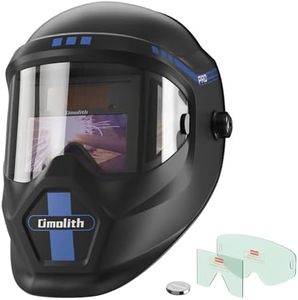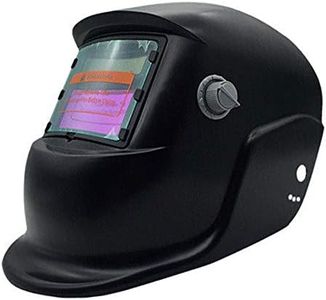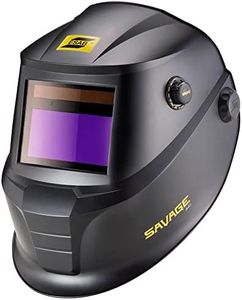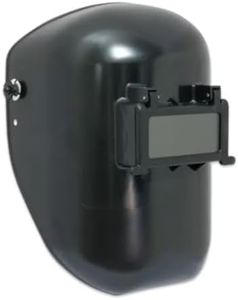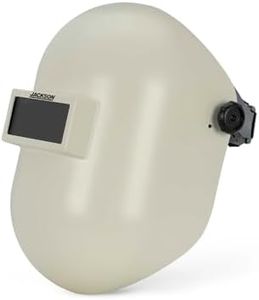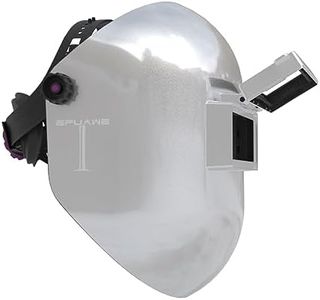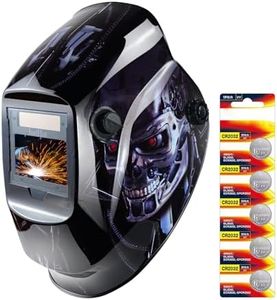We Use CookiesWe use cookies to enhance the security, performance,
functionality and for analytical and promotional activities. By continuing to browse this site you
are agreeing to our privacy policy
10 Best Welding Helmets
From leading brands and best sellers available on the web.Buying Guide for the Best Welding Helmets
Choosing the right welding helmet is essential not just for protection but also for comfort and efficient work. The helmet you select can affect your visibility, neck fatigue, and your overall safety. Start by thinking about the type of welding you'll be doing, how often, and the level of comfort you expect. Always aim for one that keeps you protected, suits your working environment, and is comfortable enough for long periods of use.Lens ShadeThe lens shade refers to how dark the helmet's viewing window becomes to protect your eyes from the bright welding arc. The right lens shade keeps your eyes safe, helps you see the weld clearly, and reduces eye strain. Lens shades are rated by numbers; lower numbers (8-9) are lighter and better for low-amperage or less-bright welding like TIG, while higher numbers (12-13) are darker and suited for high-amperage, bright processes like heavy MIG or stick welding. Many helmets have adjustable shades so you can tweak the darkness level—choose a helmet with a range that matches the kinds of welding jobs you'll do.
Auto-Darkening FeatureAn auto-darkening helmet automatically adjusts the lens darkness when you start welding, saving you from flipping the helmet up and down. This makes it handy for frequent or complex tasks, and protects your eyes even if you strike an arc suddenly. Basic auto-darkening lenses may only have a single shade, while advanced models offer a range of adjustable shades and better sensitivity. If you do a variety of welding or need to work quickly, auto-darkening is a huge help, but if you weld occasionally and can pause to adjust, a fixed-shade may be enough.
Viewing Area SizeThe size of the viewing area in a welding helmet determines how much you can see while working. A larger viewing area gives a broader field of vision, making it easier to see your workpiece and surroundings, but usually makes the helmet heavier. Smaller viewing windows keep helmets lighter and may be enough for simple, straightforward welding jobs. If you work on detailed projects or need to keep an eye on more of your project, go for a wider viewing area. For shorter, simple tasks, or if lightweight comfort matters most, a smaller window works fine.
Reaction Time (Switching Speed)Reaction time is how quickly the helmet lens switches from light to dark when you start welding. Faster reaction speeds protect your eyes better from harmful arc flashes. This is usually measured in fractions of a second (like 1/10,000s vs 1/3,600s). For occasional use, slower switching speeds may be sufficient, but professionals or frequent welders should look for faster response to reduce eye fatigue and risk.
Sensitivity and Delay ControlsSensitivity adjusts how easily the lens responds to changes in light, while delay controls adjust how long the lens stays dark after welding stops. These controls help when working in different lighting environments or moving between tasks quickly. If you work outside or with other welders nearby (where stray arcs are common), higher sensitivity is useful—if you work in a controlled space, lower sensitivity may be enough. Delay controls let you protect your eyes a bit longer after the weld stops if your work piece is still glowing.
Power Source (Battery vs. Solar)Welding helmets can be powered by batteries, solar cells, or a combination. Solar-powered helmets automatically recharge from ambient light, while batteries need changing or charging. Some helmets combine both for longer life and dependability. Think about how often you use your helmet: frequent users may benefit from solar or combo power, so the helmet is always ready, while occasional users may be fine with battery-only models.
Weight and ComfortA helmet’s weight and interior padding affect how comfortable it is to wear, especially during long sessions. Heavier helmets can cause neck fatigue, while lightweight models are easier to wear for hours. If you expect to weld for long periods or have neck or back issues, prioritize comfort features and lighter weights—even if it means giving up some extras.
